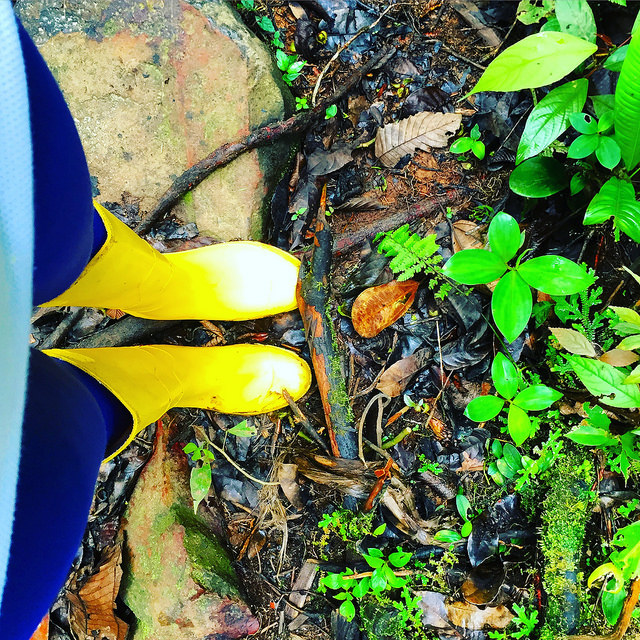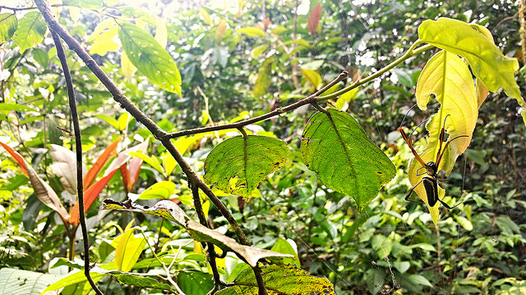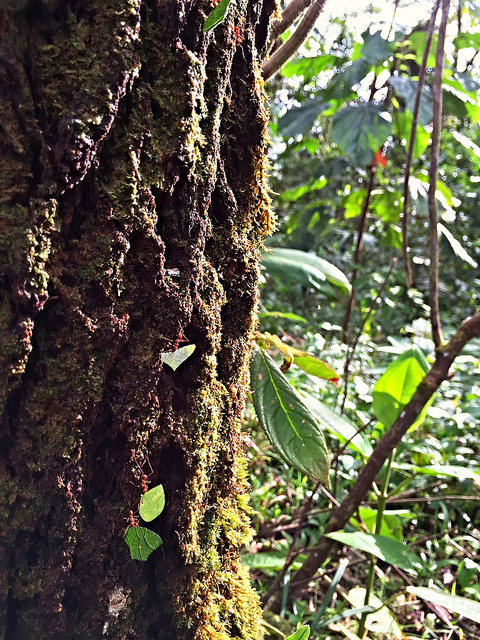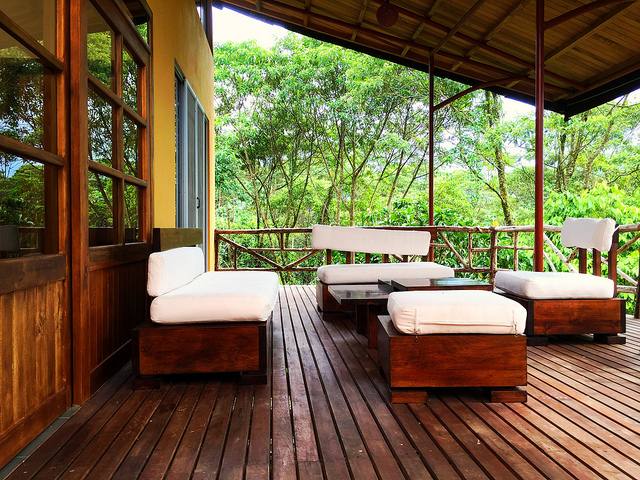Reforestation in the Amazon: Huasquila Ecuador Amazon Lodge
As the earth's number one oxygen source is slowly being destroyed, Huasquila Lodge, with the help of staff, volunteers, and guests is making a small, but lasting impact in the beautiful Ecuadorian Amazon.
Fredy stops, looks up pensively, then continues along the brown muddy path. We follow just behind, slipping and sliding but careful with our footing as we approach the steep, creekside ledge. We’ve already chewed up and spit out a plant leaf that serves as a natural anaesthetic, eaten a tart (but evidently hydrating), beet-colored shoot from the ground, and been slapped on the head ten times with a handful of large leaves, purportedly to free us from bad energy. Now we’re face to face with one of the largest spiders we’ve ever seen, attempting to find the finely detailed focus our camera needs to capture this magnificently foreign arachnid. All of this takes place within a stone’s throw of our home for the next five days, Huasquila Ecuador Amazon Lodge.
|
Just 160 kilometers southeast of Quito, on the edge of the tremendous Amazon rainforest and just outside the small town of Cotundo, Ecuador, is Huasquila Ecuador Amazon Lodge. Consisting of 20 private bungalows, the lodge was built ten years ago on pasture land that has slowly been been reforested by owners Bastienne Paliz and Pablo Maranon. The project, located within the Sumaco Biosphere Reserve, has brought native trees and plants back to an area of 20 hectares, creating an “ecological corridor” that connects Cotundo with the nearby Antisana reserve. The reforestation, performed by Huasquila’s staff, visiting volunteers, and the Cotundo community, has brought numerous animals back to the once deforested areas, including dozens of birds, monkeys, sloths, and armadillos. Dedicated to ensuring this part of the forest is available for generations to come, Basti and Pablo are taking careful measures to reduce the lodge’s impact and protect its natural surroundings. This, along with many other eco initiatives, has earned the lodge TripAdvisor GreenLeaders Silver status.
|
As Huasquila has grown, so have the trees. Surrounded completely by dense jungle, the Lodge’s small pond and walkways, themselves, are an adventure. Various types of ranas (frogs) sing a duck-like song in the night, while leafcutter ants carve out nearby tree leaves, marching the bright green pieces dutifully back to their queen all day long. With Huasquila’s close proximity to Ecuador’s capital city of Quito, a visit to the Amazon is easily accessible. The 160 kilometers can be covered by local bus in just under five hours, or a private car in less than three.
|
Following Fredy further into the steamy jungle, we approach a small cave entrance. Now, with orange painted faces and crown-like hats made from strips of a long plant leaf by our generous Kichwa guide, we grasp our flashlights and enter the cave. At first it’s mostly empty; just a slow stream of water flowing over our rainboots. But a few meters further in, we find what we’re looking for. The small dark objects hang from the cave walls and ceiling. As we approach, each one streaks away, fluttering its wings as it goes. Crawling now, careful not to smack our heads against the jagged rocks above, Fredy attempts to scare the dozens of bats forward rather than back toward us. We shine our flashlights ahead, alternating from one side of the narrow cave to the other, hoping to catch the (nearly impossible) close look at these nocturnal beings.
|
|
The bats living in the caves near Huasquila are another way the lodge is working to bring back this area’s natural habitat. Through a partnership with a local Quito university, the lodge is bringing students to the caves to see and study the bats, supporting awareness within the community and striving to preserve these mysterious mammals.
|
Finally, at the end of our long hike, we reach the place we’ve heard so much about. Resting under a large tent are dozens of rows of small trees, from seedlings to foot-high saplings. Here, in a small grove that was once roamed by geographically misplaced bovine, is where the jungle comes back.
The seemingly never ending Amazon rain forest has been doing just that. Ending. As land owners cut down forests for more lucrative endeavors, such as raising cattle, the earth’s number one oxygen source is being steadily destroyed. But not here. Not at Huasquila. Here these trees are being replanted, the forest, reforested. And by teaching guests about what an incredible life-source this jungle can be, Huasquila is helping to bring the Amazon to future generations.




















